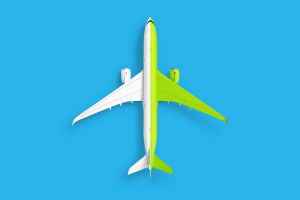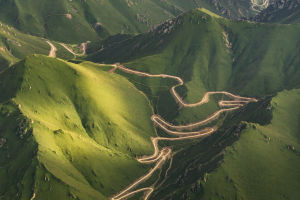The Italian Alps are a breathtaking destination for nature lovers, adventure seekers, and anyone looking for a serene escape into majestic mountain landscapes.
Stretching across the northern part of Italy, this region is renowned for its towering peaks, charming alpine villages, and world-class skiing opportunities.
How to Get Around the Italian Alps
By Car: Renting a car is the most convenient way to explore the Italian Alps, giving you the freedom to visit remote villages, scenic drives, and hiking spots. However, be prepared for winding mountain roads and possibly snowy conditions in the winter.
By Train: The Italian Alps are well-connected by train, with major stations in towns like Bolzano, Bressanone, and Aosta. From these hubs, you can easily access many of the region’s top destinations.
By Bus: There are also regional bus services that connect smaller towns and ski resorts, making it easy to get around without a car.
Best Time to Visit the Italian Alps
The best time to visit the Italian Alps depends on your interests.
Winter (December to March): This is the peak season for skiing and snowboarding. The snow-covered landscapes are perfect for winter sports, and many alpine towns come alive with festive lights and cozy atmospheres.
Summer (June to September): Ideal for hiking, cycling, and exploring nature. The mountains are lush and green, with crystal-clear lakes and wildflowers in full bloom. Summer is also great for those looking to avoid the crowds of ski season while still enjoying the beauty of the Alps.
Top Destinations in the Italian Alps
Dolomites: The Dolomites are a UNESCO World Heritage site and a stunning part of the Italian Alps. Known for their jagged peaks and dramatic cliffs, they offer some of the most beautiful hiking trails in Europe, like the famous Tre Cime di Lavaredo. During the winter, towns like Cortina d’Ampezzo are popular ski resorts.
Val d'Aosta: Located in the northwestern part of Italy, the Val d'Aosta region is home to Mont Blanc, the highest peak in the Alps. The charming town of Courmayeur is a gateway to excellent skiing in winter and hiking trails in the warmer months. The region is also known for its ancient castles and delicious local cuisine.
Livigno: A favorite among skiers and snowboarders, Livigno offers tax-free shopping and excellent snow conditions. In the summer, it transforms into a playground for mountain biking and hiking.
Lake Como: Although not in the heart of the Alps, Lake Como is a stunning alpine lake framed by mountains. It’s a great destination for relaxation, boating, and enjoying picturesque villages like Bellagio and Varenna.
Things to Do in the Italian Alps
Skiing and Snowboarding: The Italian Alps boast some of the best ski resorts in the world. Cortina d’Ampezzo, Val Gardena, and Madonna di Campiglio are just a few of the top spots for skiing and snowboarding. With well-groomed slopes and a range of difficulty levels, these resorts cater to beginners and pros alike.
Hiking and Trekking: In the warmer months, the Italian Alps offer countless hiking trails for all skill levels. The Alta Via 1 in the Dolomites is one of the most famous long-distance hikes, while shorter day hikes like the trails around Tre Cime di Lavaredo provide stunning views. For a more leisurely experience, many resorts offer cable car rides to panoramic viewpoints.
Wellness and Spas: After a long day of outdoor adventures, there’s nothing better than relaxing at one of the region’s many wellness centers and spas. Towns like Bormio are famous for their thermal baths, where you can soak in warm, mineral-rich waters surrounded by mountain views.
Exploring Alpine Villages: The Italian Alps are dotted with charming alpine villages where you can experience local culture, architecture, and cuisine. Towns like Ortisei and Selva di Val Gardena in the Dolomites are known for their wooden chalets, artisan shops, and delicious traditional food.
Italian Alps Cuisine
Food in the Italian Alps is hearty and comforting, perfect for fueling up after a day of mountain adventures.
Polenta: A staple dish made from cornmeal, often served with local cheeses, sausages, or wild game.
Canederli: Dumplings made with bread, milk, and various fillings like cheese, spinach.
Pizzoccheri: A type of buckwheat pasta from the Valtellina region, typically served with potatoes, cabbage, and cheese.
Where to Stay in the Italian Alps
The Italian Alps offer a wide range of accommodation options, from luxurious resorts to cozy mountain lodges.
Luxury Resorts: For those looking to splurge, Rosa Alpina in San Cassiano and Cristallo, a Luxury Collection Resort & Spa in Cortina d’Ampezzo offer top-notch amenities, gourmet dining, and stunning views.
Charming Alpine Lodges: If you prefer a more authentic experience, consider staying at a traditional alpine lodge. Places like Albergo Diffuso in Sauris allow you to immerse yourself in local culture and enjoy a more intimate setting.
Budget-Friendly Options: For budget travelers, there are plenty of hostels and guesthouses scattered throughout the region. The Ostello Dolomiti in Val di Fassa is a great choice for those looking to explore the Dolomites without breaking the bank.
Dear Lykkers! The Italian Alps are a dream destination for outdoor enthusiasts, culture lovers, and anyone looking to immerse themselves in one of Europe’s most stunning landscapes. Whether you're hitting the slopes in the winter, hiking through alpine meadows in the summer, or simply enjoying the fresh mountain air, the Italian Alps offer a little something for everyone.


